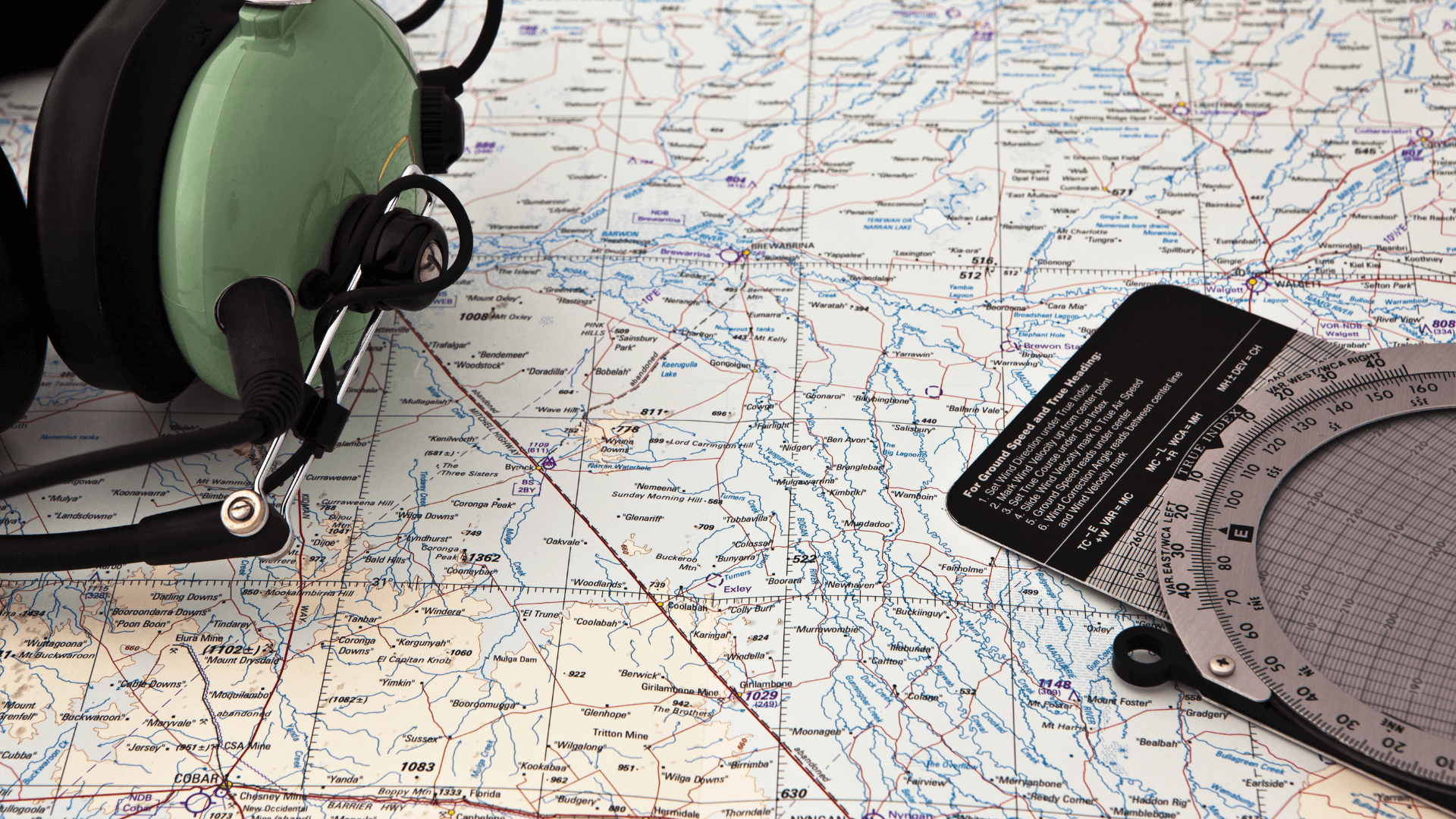
Learning to fly can be a challenging and rewarding experience. However, like any new skill, it comes with a learning curve, and mistakes are inevitable. Having a heads up on what some of those common mistakes and challenges are as well as some tips on how to overcome them can make your flight training experience better. Below are 6 common challenges that student pilots run into during their pilot training.
Over-controlling the airplane: One of the most common mistakes that student pilots make is over-controlling the airplane. This can result in excessive bank angles, altitude changes, and other undesired aircraft movements. It's essential to learn how to make smooth and precise movements on the controls. One reason why student pilots often do this is that they are looking at their instruments rather than outside the window. When looking at your instruments, any minor change is exaggerated. If you see a small angle of bank on your attitude indicator then look out the window, it likely won’t look as bad. If you fly primarily by looking outside, the tendency to overcontrol will be greatly reduced.
Failure to maintain proper airspeed: Maintaining proper airspeed is critical when flying an airplane. Flying too slowly can result in a stall while flying too fast can put excessive stress on the airplane's structure. It's crucial to learn how to maintain the proper airspeed for each phase of flight. One reason airspeed fluctuations can happen is by over-controlling the throttle rather than setting it and leaving it. Remember, attitude + power = performance. New pilots will always be fighting the battle the find the right balance between these. Setting a target power setting for the phase of flight and then flying the correct attitude can dramatically improve your performance.
Poor navigation: Navigating an airplane requires careful planning and attention to detail. Student pilots may struggle with interpreting charts, identifying landmarks, or calculating wind correction angles. It's crucial to learn how to plan a flight and navigate using both traditional and modern tools. Don’t worry, these skills are learned incrementally throughout the flight training process. As you get better at seeing the world from the sky your interpretation of the charts will become much easier. When it comes to flight planning, take your time. Plan flights you don’t even intend to fly, just for practice. Really strive to understand each step and the “why” behind it.
Failure to monitor engine instruments: Monitoring the engine instruments is crucial when flying an airplane. A student pilot may forget to monitor the engine instruments, which can result in engine failure or other critical problems. It's essential to learn how to scan the engine instruments regularly and to respond appropriately to any indications of trouble. A pilot’s eyes should always be scanning. Whether it be for traffic, flight instruments, or engine instruments, there is always something that requires your attention. There’s no hard number but one suggestion is to include the engine instruments into your scan once every 5th pass.
Poor communication: Communication is critical in aviation. Student pilots may struggle with communicating with air traffic control or other pilots. It's essential to learn how to communicate clearly and succinctly, using standard phraseology and protocols. This can not be stressed enough. You’ve got enough going on just trying to learn to fly let alone talking on the radio. Take time on the ground to learn standard phraseology using the resources provided by Transport Canada and Nav Canada. LiveATC.net is a great place to go and listen to real ATC communication. Always take a second to think before you click the button to speak. Also, be sure to give accurate position reports. Saying you are over the lake when in reality you are just next to it can be the difference between a mid-air collision or not.
Inadequate pre-flight checks: Pre-flight checks are essential for ensuring the airplane is airworthy and safe to fly. Student pilots may overlook some critical items during pre-flight checks, such as fuel levels, oil levels, or control surface movements. It's crucial to learn how to conduct a thorough pre-flight check and follow a standardized checklist.
Overall, learning to fly requires a lot of practice, patience, and attention to detail. By being aware of common errors, student pilots can take steps to avoid them and become safe, competent pilots.
Begin your flight training journey with Level Flight. Our team of pilots has decades of experience in the industry and is ready to help you achieve your goals. Our online ground school courses are interactive and fit into your schedule no matter what it looks like. Get in touch with us today by filling out the online contact form below or calling 403-483-2880.
FAQ's
You need to start with a Private Pilot License and then get a commercial pilot license, multi-engine rating, and an instrument rating. From here you need to build some experience to meet the current qualification requirements that the airlines are looking for. Jobs might include flight instructing, survey or Arial work, charter flying, or bush flying. Eventually, you will obtain an Airline Transport Pilot License (ATPL). This license is not required to work as an airline pilot in the First Officer position but if you want to be a captain you will need your ATPL license.
To answer this we need to know what kind of pilot do you want to be. Do you want to be a private pilot and fly recreationally? Or do you want to be a commercial pilot and fly for hire? One thing to note is that flight training can be a variable cost that is dependent on each specific person's rate of progress. Be wary of anyone that will give you a solid low price figure as it may be based on an absolute best-case scenario and not average statistics. Check out the link below and click on each license and rating to learn more about the specific costs and requirements. Each one is listed in the typical order in which you might obtain them.
Generally speaking, a pilot will spend anywhere from approximately $12,000 to $100,000 to become a pilot depending on what kind of pilot they want to be. Note that ground school is the cheapest part of the flight training experience. The actual flying part of the training is where the big money is spent. Flight schools roughly charge an average of $200/hr for each flight.
No. Many modern e-learning courses provide as much or more engagement than traditional classroom settings. Be sure to look for a course that offers instructor support, engagement avenues, and of course relevant content on a modern platform.
Level Flight Alumni Say
The number of Level Flight Ground School Pilots continues to grow. We are proud that our comprehensive and innovative Ground School curriculum inspires students to complete their first steps and continue to develop to achieve their aviation dreams. Here is what some of our students past and present say about their experience with Level Flight Ground School.
Take Flight Now
Level Flight is Canada’s best online ground school. It is our mandate to provide higher quality, more engaging training for Canadian Student Pilots. If you are seeking the exhilarating freedom of flight for a hobby or with aspirations of a career in the skies, Level Flight offers the best ground school experience available. Sign up for our online learning platform now and discover the adventure that awaits you at Level Flight.
By submitting this form, you opt-in and give expressed consent to receiving SMS / text messages, calls, and emails from us for the purposes of communication related to your inquiry or related to the products and or services we provide.
